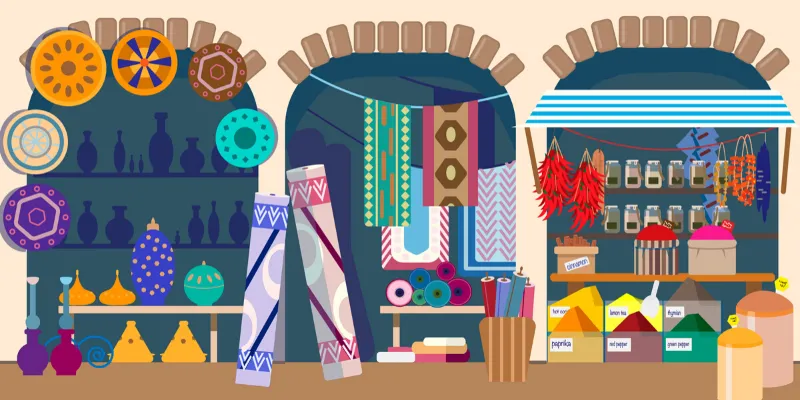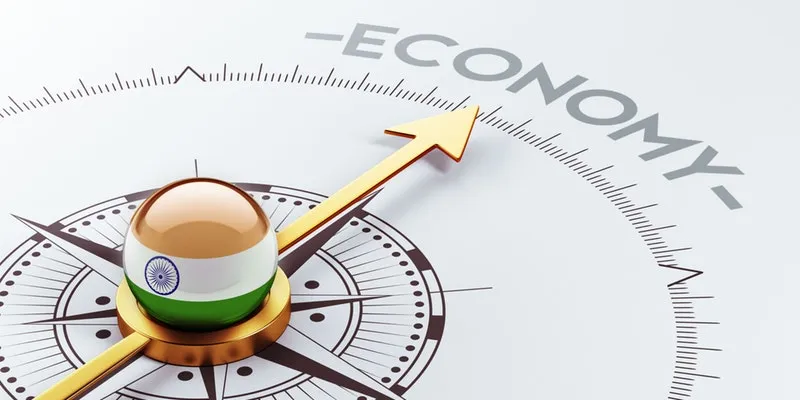How MSMEs can crack the supply chain distribution puzzle
Supply chain distribution is how businesses move their products and services from sources to customers and user businesses. Distribution plans largely depend on the business goals of the company.
There are plenty of definitions of supply chain distribution, some of which overlap. One typical explanation for distribution refers to it as the process of making goods available for consumers or other user businesses, moving them from manufacturer or distributor as and when they are needed. Other broader definitions look at it as a method of transferring the goods from supplier to manufacturer to wholesaler or retailer, and finally to the end consumer or user.
The supply chain as a whole, and specifically, distribution, are complex activities even on normal days and they get highly complicated and ambiguous during a crisis. There is no playbook to address such dynamic challenges. The MSME owners must get intensively involved in the problems to find solutions for the problems that are generic and specific to your business.
In today’s integrated and interdependent economic and business ecosystems, distribution is not be looked at as a siloed activity but one where numerous activities and processes are involved and connected, including supplier management, packaging, warehousing, inventory, logistics, marketing, and technology. The supply chain distribution processes are generically applicable to large as well as small businesses but we will focus more on the perspectives of MSMEs.

What are the channels of distribution?
The most critical element in distribution is the channel — which can vary from sector to sector and segment to segment. One distribution channel may work well for one type of business but may not be ideal for another. Some channels work for large organisations but not for MSMEs. You should thoroughly evaluate and choose the distribution channels and the methods that suit the profile of your organisation. MSMEs have to be particularly careful here.
We will take a look at the channels that are widely used across industries, segments and geographies.
- Wholesaler: Here, goods are distributed from manufacturer to wholesaler who will then get the goods to the end customer directly or through a retailer.
- Retailer: Manufacturers or wholesalers move goods to the retailer, which is the last chain before the goods reach the end customer or user.
- Distributor: This channel moves goods from the source or manufacturer to a distributor who is an authorised dealer for sale to the consumer.
- Franchise: In this model, franchisees act as distributors mostly on fees like royalty. It is more of a business partnership.
- Ecommerce: This is the emerging and most disruptive channel wherein goods are available on the online marketplace for customers to buy. The goods are then delivered directly to the buyer. Ecommerce has led to rapid changes in the distribution system, especially after the COVID-19 pandemic.
- Omnichannel: A multi-channel or hybrid distribution channel is the current trend. Many brick and mortar stores and retailers have started embracing ecommerce or online channels, particularly after the pandemic. Omnichannel can also include direct and indirect distribution and any two or more of the above channels.
Today's distribution chain is facing unprecedented disruptions that pose challenges and opportunities to all parties in the supply and distribution system. The challenge of MSMEs is even bigger as these changes call for swift initiatives to embrace digital and business transformations. The entry of new players, particularly big enterprises with deep cash, into their segment poses threats to MSMEs.
The ongoing environment prompts MSMEs to relook at the physical logistics of moving inventory along a distribution chain, the way the goods are moved, where the inventory is stored and how to identify your customers and their needs to retain them loyal to you.
Supply chain distribution management challenges
The distribution challenges that enterprises of all sizes, particularly small and medium businesses face, arise mainly from:
- Natural disruptions include climatic events, and epidemics or pandemics resulting in demand downturns, supply shortages, and logistics hurdles.
- Human disruptions include riots, protests, wars, and strikes.
- Transportation disruptions include transport vehicle maintenance downtimes and accidents, as well as delayed flights and restrictive regulations on different modes of transportation.
- Economic challenges include recessions, depressions, fluctuations in consumer or market demands, new regulations and compliances, currency exchange fluctuations.
- Product disruptions include product recalls, packaging issues and quality control issues.
- Buyer disruptions include order changes, logistics changes and goods returns.

How do MSMEs address the supply chain distribution challenges?
Businesses, especially MSMEs, must adopt a more professional approach in the management of their operations to sustain and grow their businesses. MSMEs cannot afford to neglect this aspect anymore. Here, we will go over some of the approaches that can help small and medium enterprises crack the supply chain distribution challenges.
- Visibility
Supply chain distribution visibility is critical for enterprises of any size for retaining and growing customers and business. This is more crucial for MSMEs as they don’t have the financial muscle to maintain large buffer stock or take the loss of customers due to delay in the delivery in stride or allow extra days to customers for payment of invoices.
They have to operate with minimum resources within multiple constraints and hence, getting visibility of the distribution network that includes distribution channels, inventory, logistics, invoicing and payment, helps companies deliver goods to the destination to the satisfaction of the customers. Technology is very crucial to provide visibility to MSMEs for them to sustain and thrive.
- Finance
For the supply chain, including distribution, to work smoothly, finance is an integral requirement. Disciplined and efficient financial management including cash flow by way of collecting customer payments in time, eliminating and reducing non-productive expenses and deferring certain operating and capital expenditures judicially is a must to ensure that suppliers are paid in time so that the entire supply chain and business are not adversely affected.
Laxity in cash management can negatively affect the business of small companies in the form of stoppage of supplies, not having sufficient inventory, not being able to meet liabilities, adoption of technologies.
- Physical logistics
Companies who have adopted technologies and processes to track the physical logistical movement of goods stand a better chance to satisfy the expectations of customers leading to an excellent customer experience. MSMEs must explore and leverage the relevant but inexpensive digital tools that are available in the cloud environment to be not left out of the race. Needless to say that technology has to go with process improvements to deliver the results.

- Government schemes
The government has come out with various schemes that were launched before and post-COVID-19 to help MSMEs tide over the difficulties they face in the management of the supply chain including the distribution. MSMEs must identify and use the schemes that are suitable to solve their pain points.
- Process improvements
In ecommerce and online marketplace models, the last-minute delivery is arguably the most crucial element that can decide the success of the business model and makes. Your online marketplace may have good products at competitive prices but if you fail in meeting the delivery expectations your business is unlikely to succeed. Having a robust logistics network and micro fulfilment centres make big difference. Micro fulfilment centres ensure a faster delivery to address the last minute delivery challenge.
Process improvement is not confined only to online marketplaces but to all types of business models. You should identify and implement improvements that could address the specific needs of your business. You should be open to and equipped for adapting dynamics changes to the dynamic market and customer behaviour changes.
- Inventory
The supply chain is all about the inventory of goods, procurement, manufacturing, and distribution. For the distribution to ensure fulfilment of customer orders as per their expectations, it would require you to maintain the planned inventory level. This, in turn, calls for an ideal level of inventory of materials if it is a manufacturing organisation.
The capability of a business to keep optimal inventory is important for its success as more inventory means blockage of cash and less inventory means inability to meet fulfilment of customer orders. Distribution is highly dependent on inventory and any mismanagement of it can break your business.
- Analytics
Capturing and analysing internal and external data need not be emphasised. You should have access to the historical data to help you simulate and forecast future scenarios. The ability to capture, collate, analyse and infer the external data concerning competition, dynamic and volatile market conditions, business risks, market demand, customer preferences, etc, help you pivot your plans on distribution channels and strategies.
MSMEs are more vulnerable to the changes in the above conditions and hence they should be equipped to handle them well. Most MSMEs are still not convinced about the need and importance of data and analytics in their journey towards profitability and scale-up.
- Technology
Technology has become arguably the most important element in transforming the supply chain distribution in today’s market of volatile conditions and dynamic changes. You might have noticed that all the elements that we discussed above can be achieved only with the help of technology. The disruptions in the entire ecosystem call for digital transformation to bring visibility, agility, efficiency, and accuracy in managing the distribution network. This is crucial for both digital business models and conventional businesses.
For example, in today’s conditions, pop and mom or kinara or brick and mortar stores can survive only if they transition to an online or hybrid model leveraging various emerging technology. In non-digital businesses, technology makes difference in the management of the entire supply chain and logistics. Likewise, all businesses need visibility and transparency in their operations to provide a better experience to customers and suppliers. Technology tools are available these days at low cost and that too on Opex mode as SaaS.
Conclusion
In normal and volatile conditions, MSMEs face various challenges that threaten their sustenance and continuity. The MSMEs that have survived and grown are the ones that adapted to situations and changes, particularly in the supply chain management that include distribution. The owners of MSMEs have always fancied the idea of managing the entire business themselves and it is becoming difficult when the market has become highly competitive. The competitiveness comes from technology adoption, new practices and strategies which require a professional management team. MSMEs don’t have the luxury anymore to continue working the traditional way in the ever-changing dynamics world and still hope to succeed.
YourStory’s flagship startup-tech and leadership conference will return virtually for its 13th edition on October 25-30, 2021. Sign up for updates on TechSparks or to express your interest in partnerships and speaker opportunities here.
For more on TechSparks 2021, click here.
Applications are now open for Tech30 2021, a list of 30 most promising tech startups from India. Apply or nominate an early-stage startup to become a Tech30 2021 startup here.
Edited by Kanishk Singh
(Disclaimer: The views and opinions expressed in this article are those of the author and do not necessarily reflect the views of YourStory.)









